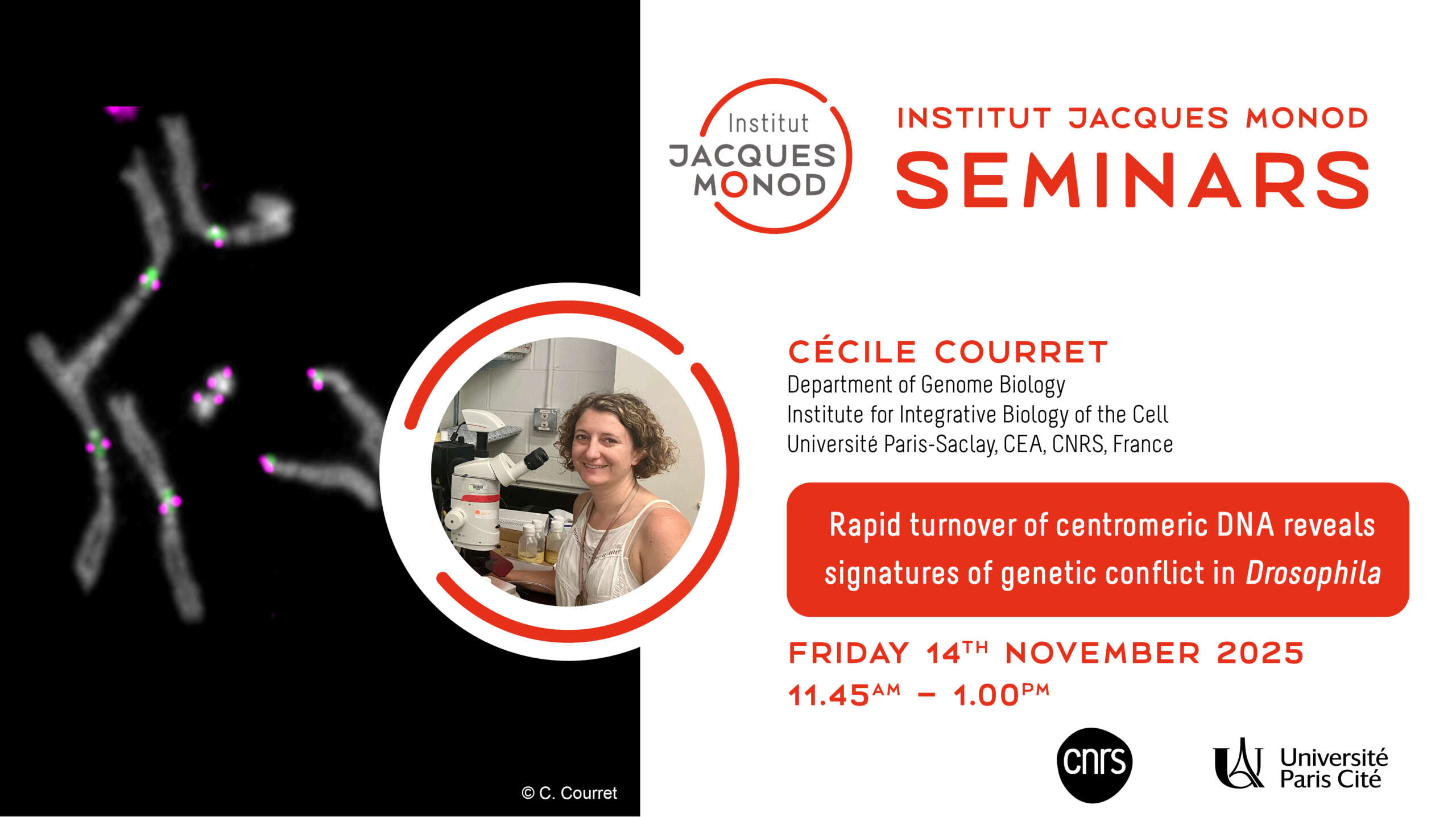
- Cet évènement est passé.
Séminaire Institut Jacques Monod – Cécile Courret

Invitée par l’équipe Duharcourt, Cécile Courret (Department of Genome Biology, I2BC – Institute for Integrative Biology of the Cell, Université Paris-Saclay, CEA, CNRS UMR 9198, Gif sur Yvette, France) présentera un séminaire de l’Institut Jacques Monod sur le thème :
Rapid turnover of centromeric DNA reveals signatures of genetic conflict in Drosophila
Résumé :
Centromeres are essential chromosomal regions required for faithful chromosome segregation during cell division. They are defined epigenetically by the presence of the centromere-specific histone H3 variant, CENP-A, yet they are typically embedded in repeat-rich regions of the genome, making the role of underlying DNA sequences in centromere function and specification unclear. In Drosophila melanogaster, centromeres correspond to islands of retroelements flanked by tandem satellite repeats, but their evolutionary stability remains uncertain. We investigate centromere evolution and variation both within D. melanogaster and across its close relatives in the simulans clade (D. simulans, D. sechellia, and D. mauritiana). Using a combination of long- and short-read genomic sequencing, CUT&Tag mapping of CENP-A, and cytological validation with Fluorescence In Situ Hybridization (FISH), we characterize centromere organization, composition, and turnover. Within D. melanogaster, we find that centromere islands are polymorphic across strains from diverse geographic origins, with reference centromere islands absent in some genomes. We discover structural DNA variation that is associated with a shift in centromeric chromatin, suggesting that the organization of the reference centromere islands is not essential for centromere function. However, centromeres may still have conserved features even when their organization is variable, as we find that CENP-A enriched sequences are similar across strains, including those with polymorphic centromeres. Across species, we uncover dramatic centromere reorganization, including recurrent shifts between retroelements and satellite DNAs over short evolutionary timescales (<240 Kya). None of the D. melanogaster centromere islands are conserved in the simulans clade; instead, centromeres are largely composed of two clade-specific complex satellites (500 bp and 365 bp). Furthermore, in D. sechellia, the dot and X chromosome centromeres have relocated onto telomere-specific retroelements, creating true telocentric chromosomes. Interestingly, the G2/Jockey-3 retroelement, common to all D. melanogaster centromeres, shows variable enrichment across simulans clade species. Altogether, our findings demonstrate that centromeric DNA sequences are highly dynamic both within and between species, with recurrent turnover and structural polymorphisms shaping their evolution. These results highlight the plasticity of centromeric DNA and its role in chromosome function, consistent with ongoing genetic conflict driving rapid centromere evolution.

